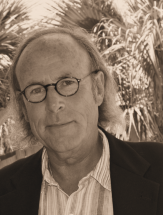The Eighth Step – Building the Bridge to Home

Overview
Originally Published: 08/16/2012
Post Date: 08/06/2015
by Tim Cheney
Attachment Files
PDF Article |The Eighth Step – Building the Bridge to Home
Summary/Abstract
Chooper'sguide co-founder's experiential account of the eighth step .
Content
 |
The Eighth Step – Building the Bridge to Home"To forgive is to set a prisoner free and discover that the prisoner was you." ~ Lewis B. Smedes |
“Be willing to have it so. Acceptance of what has happened is the first step to overcoming the consequences of any misfortune”. ~ William James
“Made a list of all persons we had harmed, and became willing to make amends to them all.”
Addiction is a ‘rapacious creditor’ that slowly devours all that is essential and sacred in one’s life. As addicts, we are burglars robbing our own temple of our physical and mental health, our souls, our emotions including the capacity to feel and to love and be loved. We steal our lives and ultimately stand barren. We slaughter our personal relationships and drag our loved ones through hell as we doggedly march towards self annihilation. Systematically we sabotage and destroy all that we hold dear to us and then our disease whispers to us that we are misunderstood and that others are to blame. We turn the power over to others for our fate but then quickly sabotage those very same relationships resulting in the alienation of all that care for us. We proceed to adopt a victim mind set and become increasingly critical of people and society. We complain of our pitiful childhoods, the police and the court system, our employers, our families and anyone else who gets in the way of our addiction. We become masters of rationalization, denial and projection which fuel our self justification. The payoff is helplessness. For each act we commit against ourselves, our families, our friends and society, we place another bar in the wall of our internal prison until we are totally alone. We have cast ourselves into exile and are left with only our anger, our despair, our hopelessness and our disease. It festers and apathy sets in. We now have succeeded in destroying our external world.
Although many will argue that addiction is a victimless crime and that we each possess the right to cancel our own captivity, the reality is that our words and our behavior impact and, in many cases, harm others. Although we may invoke “to thine own self be true” to defend our addictive behavior, the logic is flawed because the increasingly self destructive behavior is a direct result of a cellular changes in our brain (disease) which precludes the ability to make healthy choices.
In the previous steps, my focus had been personal in nature and the work had been internal. My admission, my understanding, my spiritual relationship with a higher power, my inventory, my willingness and my request for removal of my shortcomings. So far the journey had been about gaining perspective and understanding so that I could regain some form of internal balance. Step eight was new territory. It was time to realize that my world was much bigger than me. It required becoming willing to make amends to my external world, both individuals and society. My god I thought, make a list? How could I do that? I couldn’t remember significant segments of time in my life and, for the ones I could, the prospect of being willing to put these persons on a list and then in the ninth step having to reach out to them and make amends was unthinkable and often dangerous. I had been a hardcore street narcotics addict which translated into I had committed daily acts that were socially reprehensible, illegal and that resulted in people suffering financial, emotional and/or personal harm. It wasn’t a matter of apologizing for spilling red wine on a rug, kissing someone’s wife in the butler’s pantry or spending family savings. My wrong doings were much more extensive - or so I thought. I had become so isolated and out of touch with reality that I envisioned myself as a 20th century Attila the Hun. In my mind, I believed that everyone I had touched in my life suffered some form of harm. I believed I had long since past the point of social redemption and, although I was clean and sober, was well beyond forgiveness.
I could envision how this was going to go down. Ding-Dong: hi I am Tim. do you remember me? I am here today to make amends to you for forging your checks or robbing your house or whatever. 911, May I help you? Yeah, I have some wacko that ripped us off years ago standing on our doorstep saying he is here to apologize and make amends. Claims he is clean and sober and that this is part of some 12 step program that he is involved in. I am afraid he is casing our house again. Maam, keep him talking, we will get a car out there immediately. This and other scenarios started blossoming in my head when the word “willingness” appeared. I may have been willing in theory and in spirit, but I sure was going to be selective in my doorbell ringing. Is this really necessary? Why can’t I just let sleeping dogs lie?
Acquiring willingness to do the eighth step for me became a sequential process. In my typical manner, I initially over analyzed this step and tried to place the process into a construct that was logical and grounded in philosophical, theological and psychological truths. I was told that the result was not the focus but rather the process and that the amend, not the forgiveness, was the objective. I needed to understand the value of conducting this exercise and justify the risk or downside of exposing myself. I proceeded to put it into a sequential model beginning with awareness, followed by admission or personalizing, then understanding followed by acceptance. Acceptance was my key to willingness. This was the foundation I created for willingness which once achieved would bring change. I was told the person I was would use again and that change was a prerequisite to transformation and long term recovery. Furthermore, it didn’t make much sense for me to do the first seven steps to change my internal world and balk at changing my external world. And didn’t I ask to have my defects removed in Step Seven and weren’t pride and wrath original members of the seven deadly sins? And wasn’t my wrath merely an expression of my fear and self hatred? Theoretically, this should be a non issue if I had done my seventh step but often it is two steps forward followed by one step in reverse. Failure to move on would result in my continued isolation and prevent me from successfully reintegrating into the external world. In essence, participation in the external world, becoming one amongst many and stepping out of my internal prison demanded that I make amends.
So how to make this list. I decided to break my list out into groups: family and close pre-addiction friends; acquaintances; and people that I could not recollect. For the last group, I decided that my amends could be made by helping others. There were many people over the years and I reconciled myself to the fact that this list was organic and it would change as my memory improved or when others reminded me of deeds done.
My final epiphany after making my list was that it was missing one person. Me. I had to become willing to forgive myself for stealing my life, forgive myself for causing the pain and suffering that my addiction and acts had caused others. It is a universal truth that transcends all cultures that only by forgiving myself could I forgive others for the alleged transgressions I had manufactured to justify my behavior. This step finally made sense to me. After all, as Walt Whitman once wrote “whatever satisfies the soul is truth.“ This was my truth that I had to honor. For to become free of the manacles of my past, I must be willing to make amends to my external world.
About the Author
Tim C. has been in long-term recovery for over 34 years. He is the co-founder and managing partner of Chooper’s Guide, a web-based treatment and information resource for addiction and owns and operates an apple orchard in Maine. He is active in the recovery movement in Florida and nationally and has been active for 32 years as a volunteer and advocate for substance abuse and child abuse.
© Copyright 2012 by Timothy Cheney. All rights reserved.





